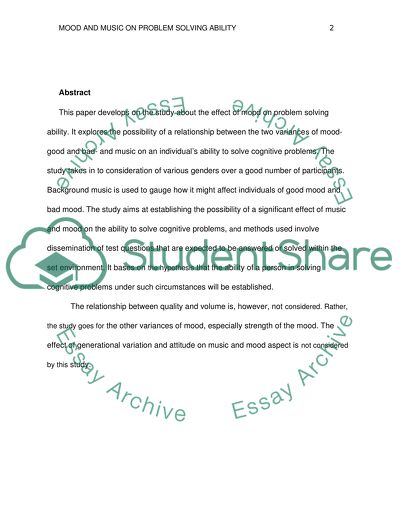Cite this document
(“Examining the Effect of Mood and Music on Problem Solving Ability Research Paper”, n.d.)
Retrieved from https://studentshare.org/psychology/1393785-the-effect-of-mood-and-music-on-problem-solving
Retrieved from https://studentshare.org/psychology/1393785-the-effect-of-mood-and-music-on-problem-solving
(Examining the Effect of Mood and Music on Problem Solving Ability Research Paper)
https://studentshare.org/psychology/1393785-the-effect-of-mood-and-music-on-problem-solving.
https://studentshare.org/psychology/1393785-the-effect-of-mood-and-music-on-problem-solving.
“Examining the Effect of Mood and Music on Problem Solving Ability Research Paper”, n.d. https://studentshare.org/psychology/1393785-the-effect-of-mood-and-music-on-problem-solving.


